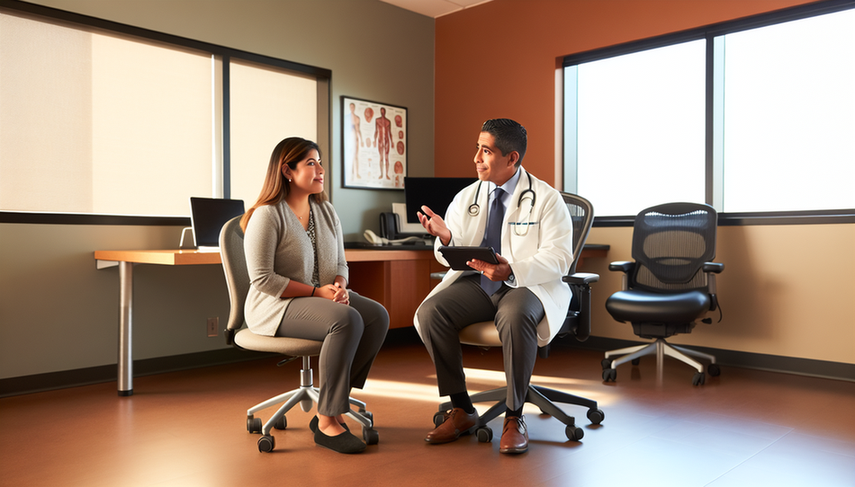Effective History Taking: Time-Saving Communication Techniques for Medical Interviews

Effective history taking is a crucial component of the medical interview, allowing physicians to gather relevant information efficiently. In an environment where time is a limited resource, communication techniques play a vital role in optimizing this process. A physician's ability to communicate clearly and concisely not only enhances the quality of care but also contributes to significant time-saving.
Diving into Communication Techniques
The implementation of communication technologies has proven to be a valuable tool for improving efficiency in medical practice. For instance, the use of dedicated mobile applications has increased clinical productivity and case progress awareness, as observed in a study on the efficiency of organ procurement and transplantation [1]. Additionally, electronic communication, such as the use of personal health records, has facilitated information management and improved the physician-patient relationship [2].
Virtual communication has also transformed healthcare, especially during the COVID-19 pandemic. The adoption of virtual methods has improved time efficiency and accessibility, allowing physicians to manage consultations more effectively [3]. However, it is crucial to address the challenges of remote communication, such as clarity in information transfer and data security [4].
Conclusions
The integration of effective communication techniques in the medical interview is essential for achieving effective history taking and significant time-saving. Technology, when used appropriately, can be a powerful ally in enhancing efficiency and quality of medical care. It is fundamental for physicians to continue developing their communication skills and adopt technological tools that facilitate interaction with patients, thereby ensuring high-quality, patient-centered medical care.
Referencias
- [1] Mobile Application for Communication Increases the Efficiency of Organ Procurement and Transplantation.
- [2] Uses of Personal Health Records for Communication Among Colorectal Cancer Survivors, Caregivers, and Providers.
- [3] Exploring Patient Advisors' Perceptions of Virtual Care Across Canada.
- [4] Medication management of COVID-19 patients during transition to virtual models of care.
Created 23/1/2025
